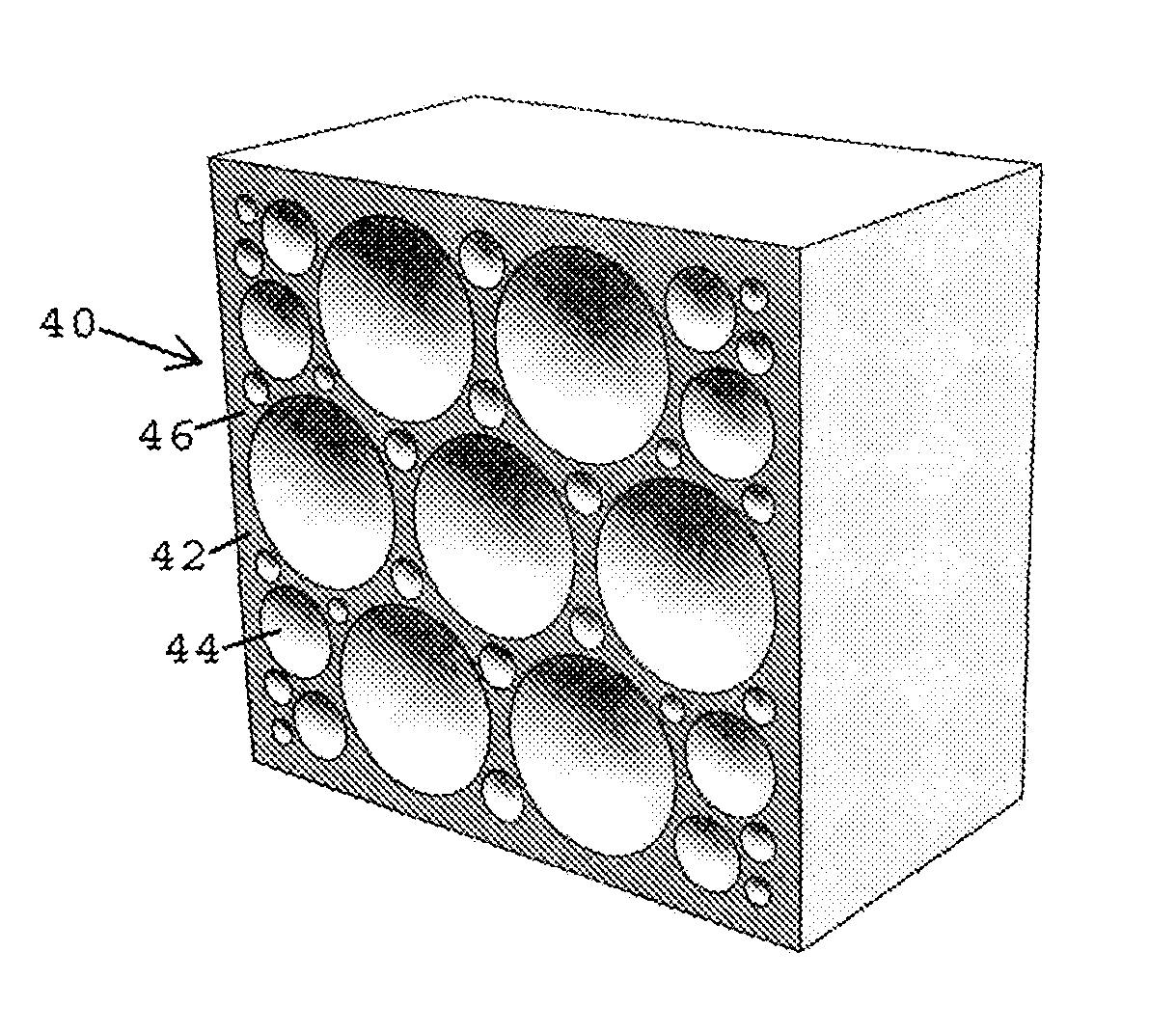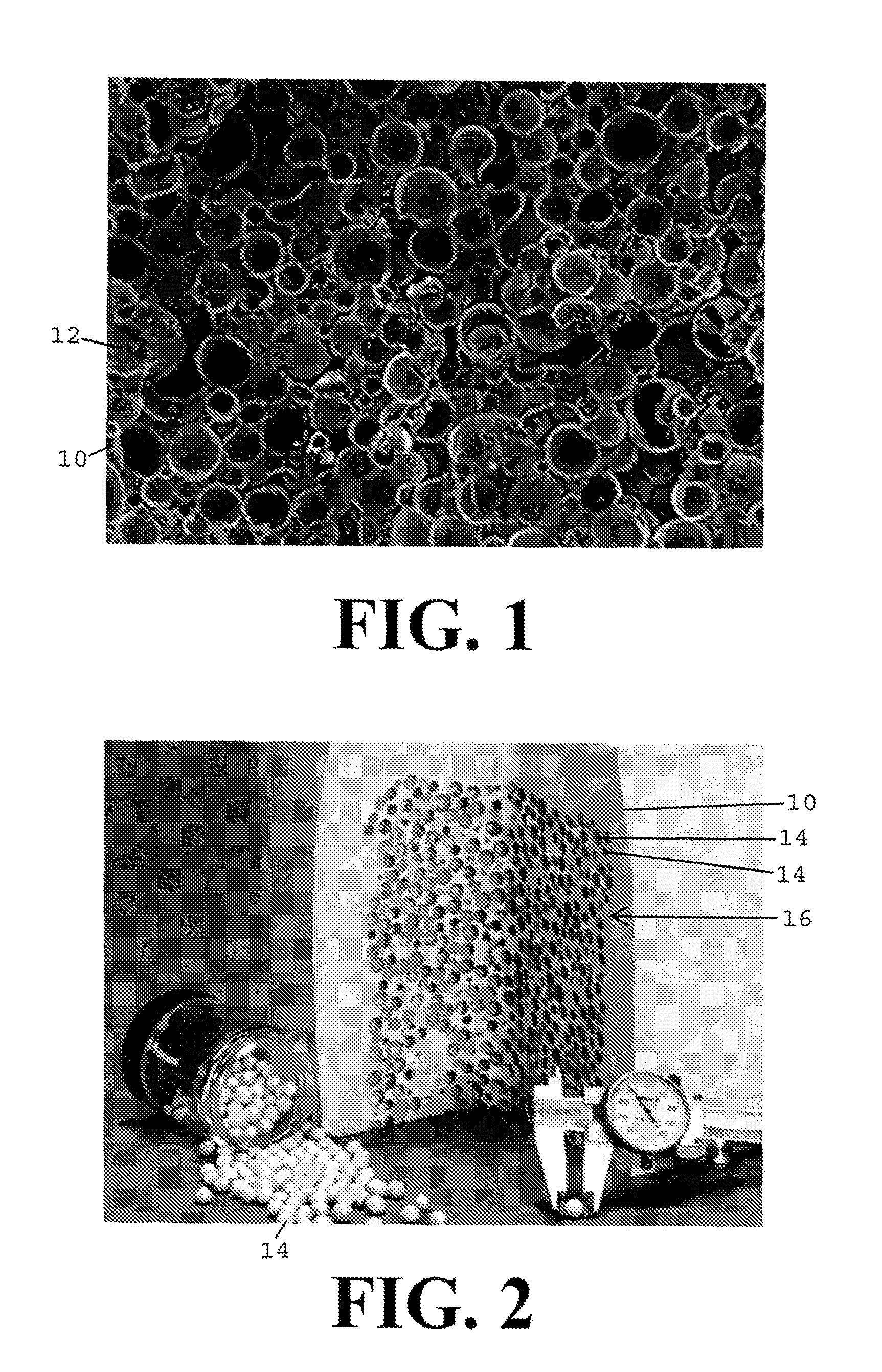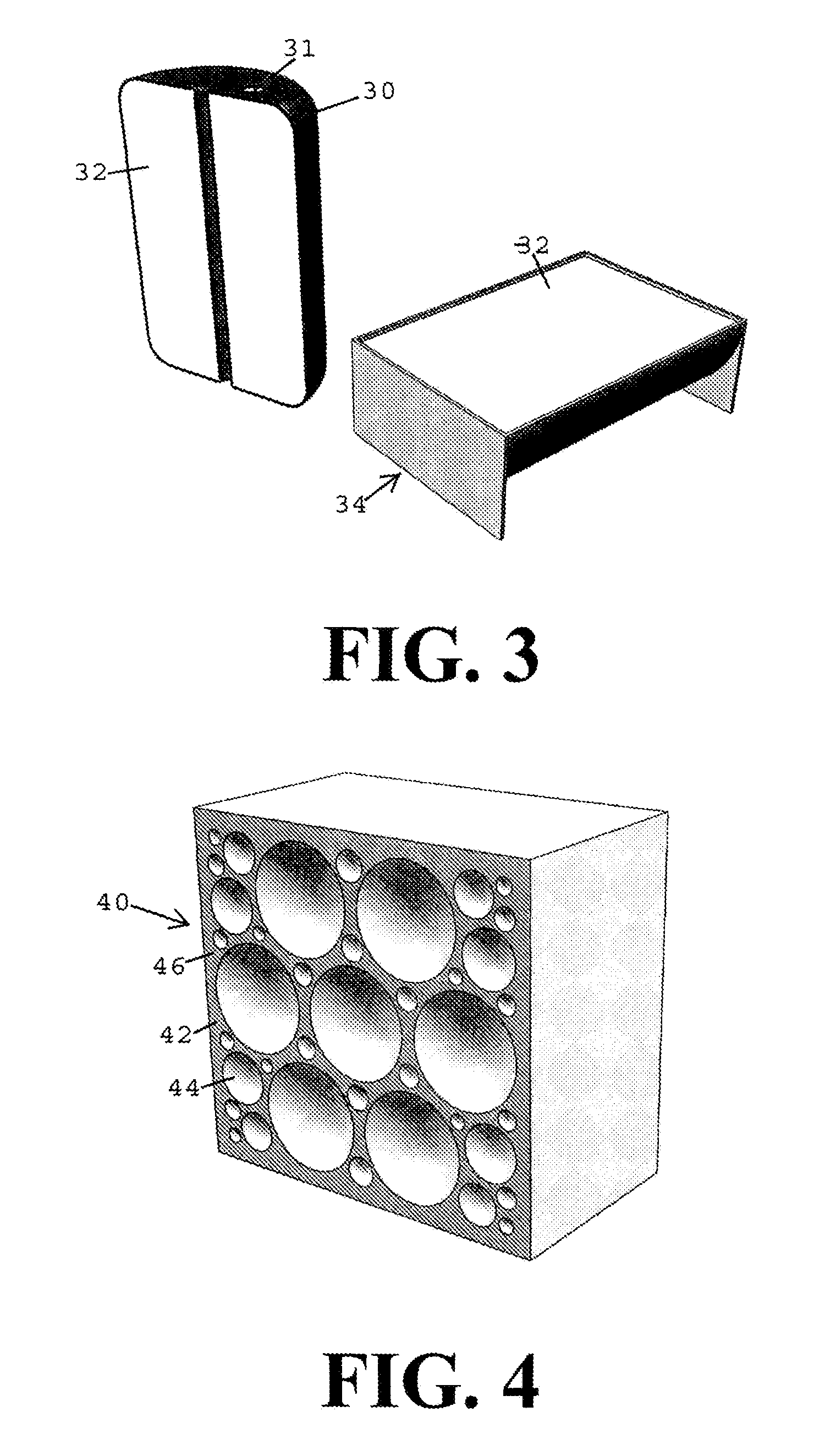Low density subsea buoyancy and insulation material and method of manufacturing
a buoyancy and insulation material, low density technology, applied in the direction of additive manufacturing apparatus, thin material processing, domestic applications, etc., can solve the problems of reducing the efficiency of bulk processing, adding time to each project, and relying on bulk processing methods. , to achieve the effect of low density, minimal material use and density, and optimized strength
- Summary
- Abstract
- Description
- Claims
- Application Information
AI Technical Summary
Benefits of technology
Problems solved by technology
Method used
Image
Examples
Embodiment Construction
[0031]FIG. 1 is a microscopic image of a cross-section of microspheres 12 randomly mixed in epoxy 10. The image shows both the variation in size and shape of the microspheres 12, as well as the random packing of those spheres in the epoxy 10.
[0032]FIG. 2 shows macrospheres 14 of different sizes together with microsphere-filled foam in prior art syntactic foam casting 10 as well as some loose macrospheres 14. The image shows both the variation in size and shape of the macrospheres 14, as well as the random packing 16 of those spheres.
[0033]FIG. 3 shows a cutaway of a plastic shell 30 filled with foam 32 and a mold 34 containing syntactic foam 32. In this image the objects are shown with syntactic foam 32 without macrospheres. The plastic housing has a fill port 31 through which the housing is filled. Once poured and cured, the object may undergo secondary operations (like drilling of mounting holes) before being ready for shipment. The mold shown 34 is typical. Molds are often made o...
PUM
| Property | Measurement | Unit |
|---|---|---|
| Thickness | aaaaa | aaaaa |
| Pressure | aaaaa | aaaaa |
| Density | aaaaa | aaaaa |
Abstract
Description
Claims
Application Information
 Login to View More
Login to View More - R&D
- Intellectual Property
- Life Sciences
- Materials
- Tech Scout
- Unparalleled Data Quality
- Higher Quality Content
- 60% Fewer Hallucinations
Browse by: Latest US Patents, China's latest patents, Technical Efficacy Thesaurus, Application Domain, Technology Topic, Popular Technical Reports.
© 2025 PatSnap. All rights reserved.Legal|Privacy policy|Modern Slavery Act Transparency Statement|Sitemap|About US| Contact US: help@patsnap.com



